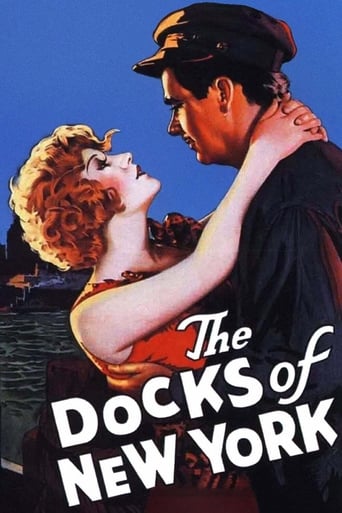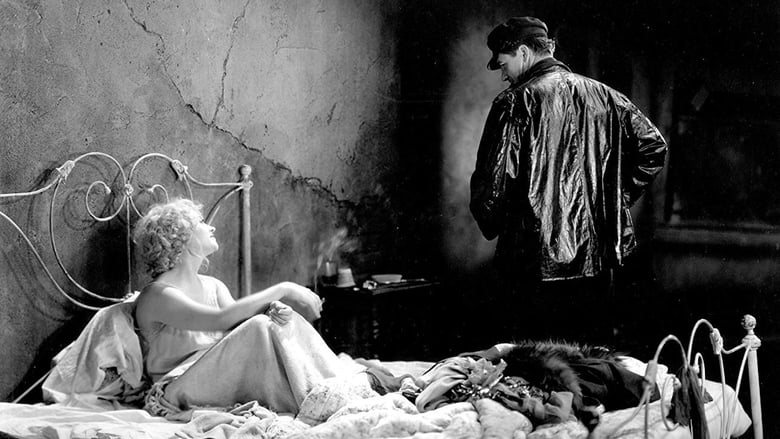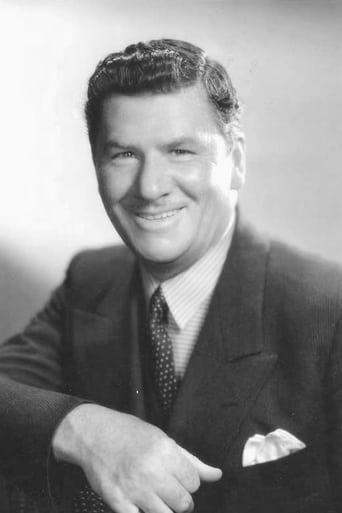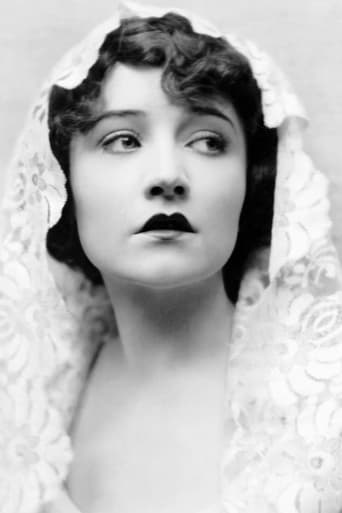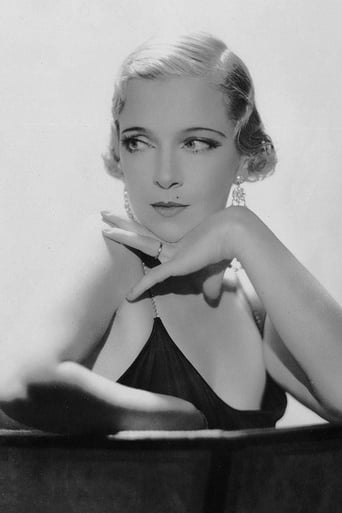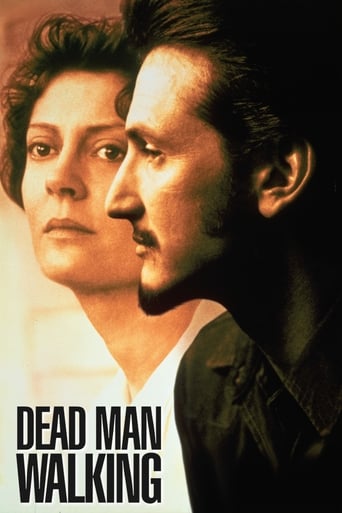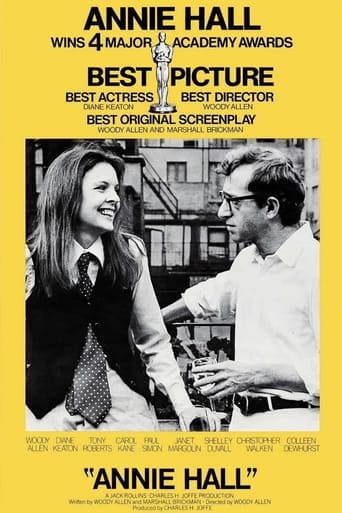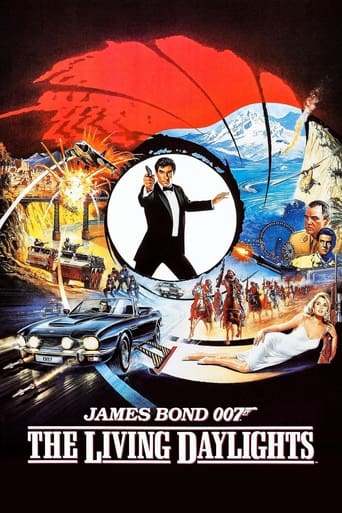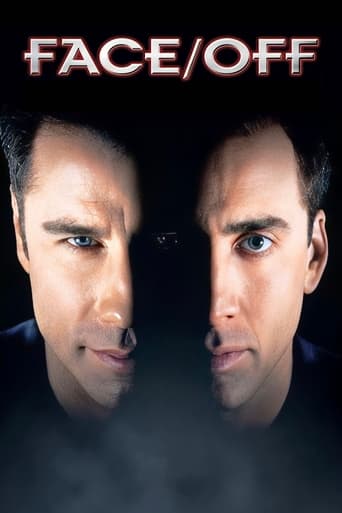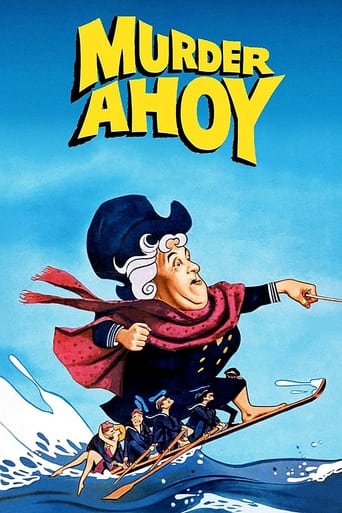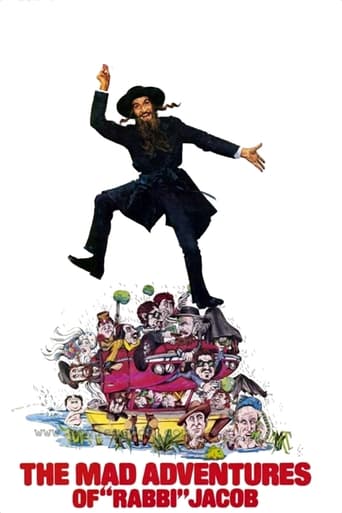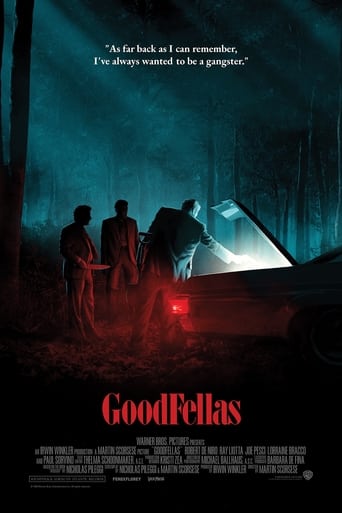The Docks of New York (1928)
A blue-collar worker on New York's depressed waterfront finds his life changed after he saves a woman attempting suicide.
Watch Trailer
Cast


Similar titles
Reviews
Initially it was very easy to forget you were watching a narrative film and to just imagine it was a documentary maker's homage to the seedier docklands of New York. Down in the ship's boiler room - George Bancroft and Clyde Cook didn't seem like actors, they actually looked like stokers, dreaming of going ashore. And the eerie silhouette of the girl on the pier - then the splash!! I really think that "The Docks of New York" is a triumph of von Sternberg's visual artistry. Mists and shadows, especially compelling was the scene when Bancroft carried the bedraggled Compson along the waterfront to her shabby room.Just as he had given Evelyn Brent's career a new lease of life, von Sternberg proceeded to do the same thing for Betty Compson. Although "The Docks of New York" was advertised as her comeback picture, according to Betty, she had never been away. In a chapter devoted to her in "From Hollywood" by DeWitt Bodeen, he chronicles her ups and downs of the twenties. She divorced her husband, director James Cruze, and was immediately besieged by creditors (to do with his bankruptcy). She then realised most of the major studios thought she was a has been but instead of taking it to heart, she went over to Chadwick, a poverty row studio and worked so hard she got back into shape and once again had the big studios bidding for her services. Another actor von Sternberg rescued was George Bancroft, who spent most of the 20s as a Western badman albeit with a hearty laugh. First casting him as the charismatic gangster in "Underworld" then as the burly stoker, Bill Roberts, in "The Docks of New York". Bancroft was larger than life!!!The story is simple, Roberts rescues a prostitute after she has thrown herself in the river. Initially hoping to paint the town red before departing the next morning, he takes a shine to Mae's vulnerableness and convinces her a good time is better than a watery grave. After carousing at the dockside tavern Bill gets carried away and proposes to Mae and after much coaxing she accepts - but she is serious as is the parson "Hymn Book Harry" (Gustav Von Seyffertitz) whose withering look upon those assembled tells you just what he thinks of them. Come the morning Bill is preparing to leave, treating the whole thing as a joke, but back on the ship......The music is wonderful with an orchestral score that has a real feel for the gritty reality of the docks - it also incorporates popular songs of the day "A Bird in a Gilded Cage", "The Sidewalks of New York" etc. I should have realised it was the brilliant Robert Israel, my favourite composer of silent film scores.Making just as much of a dazzling impression is Baclanova as a distinctly unglamorous waterside worker. She is married to Bill's brutish boss, but tells Mae "I was decent too - until I got married"!!!
Sternberg's best-regarded Silent film is also considered, along with F.W. Murnau's not dissimilar SUNRISE – A SONG OF TWO HUMANS (1927), Hollywood's artistic pinnacle during this era. The narrative is almost exclusively restricted to its exquisitely re-created titular setting, which is most evocatively lit throughout; incidentally, the waterfront crowd here is possibly the most boisterous ever depicted as something is always going on (brawls over women, drunks being thrown out, etc.) at the dive where a lot of the action takes place! The plot, as always with the director is secondary and somewhat plain: rowdy stoker George Bancroft (his third of 4 pictures for Sternberg, one of which – THE DRAGNET [1928] – is regrettably lost) goes ashore for one night, saves suicidal waif Betty Compson and marries her (presided over by sour-faced reverend Gustav von Seyffertitz, the ceremony sequence constitutes one of the film's highlights), knowing he will be leaving again the next morning.Complicating matters is the hero's bullying superior aboard ship, who sets his eyes on the girl as well – despite being married to Olga Baclanova (she, on her part, has been 'running around' during his time at sea!). Though we are never specifically told what drove Compson to make such an extreme gesture, we can assume she wanted out of the kind of sordid life that is perhaps mandated by this milieu (she certainly manages to pick herself up pretty quickly and also seems to build an immediate rapport with Baclanova!).Eventually, the latter's husband forces himself upon Compson and winds up dead; when she is about to be arrested, Baclanova's confession makes us realize it was not an act of self-defense but rather a crime of passion. Ironically, the heroine is still brought to trial when it is reported that the clothes she is wearing were stolen (by Bancroft) on the night she was saved!; just, then, however, he re-appears (having jumped off his ship!) to take the blame – and Compson promises to wait for him.As I said, the meticulous detail and beautiful cinematography are the main thing here – but the acting is commendable regardless, particularly the leading lady (who probably was never better though she would be Oscar-nominated for her subsequent movie, THE BARKER [1928], now forgotten and presumably unavailable for appraisal: for the record, I do own a couple of her other vintage efforts but they are, as yet, unwatched).
One of the less obvious differences between sound and silent pictures, is that whereas in a sound picture the director will set up a scene, prep the actors and then call action, in a silent the director could (and usually would) continue to direct even while the cameras were rolling. Of course it's hard to tell how much this difference affected the finished product in real terms. However, with a director like Joseph "von" Sternberg, who demanded a complete (and indeed tyrannical) control over every aspect of the image, the ability to carry on shouting at his cast and crew right through the take was probably a considerable bonus in fine-tuning his elaborate visual style.With Docks of New York being a late silent, it has more or less as much fluidity of movement and camera angle as your average sound flick. However there is an extreme complexity in the movement of a kind that you only really saw in Sternberg's silents. Take for example those lengthy dolly shots through the bar, with extras moving across the shot as the camera goes in or out. Those movements across the screen look haphazard, but they are carefully timed to complement the camera movement and give a rising tide of franticness. To arrange everyone so precisely there must have been almost as much activity behind the camera as in front of it. You could do a shot like that in a talkie, but it would require copious reheasing, and I don't think that's something they tended to bother with in the early sound era, what with the all the other obstacles they had to overcome. It's certainly true that Sternberg used to spend most of his set-up time sorting out the lighting schemes, rather than giving any detailed priming to his cast.Sternberg's layered patterns of movement not only add to the aesthetic quality of this picture, but they enhance its atmosphere. The barroom scenes in particular have a spectacularly chaotic feel to them. The fact that every edge of the room is filled by a mass of moving bodies makes it impossible to figure out the size and layout of the place. But for all his visual lavishness, Sternberg himself admitted to caring little about stories, and as a result the narrative gets a little lost amidst all the shadows. This is even given the fact that Docks of New York is overburdened by intertitles.Sternberg had also yet to fully develop his stylised and dappled lighting patterns that can be seen in his talkies. Here that's a good thing, because it means his camera shows the actors up a little better. And there are some fine performances here worth capturing. George Bancroft gives a superbly realist turn, looking every inch the rough but basically good-hearted stoker. Betty Compson is also nicely subtle, in a slow and measured performance with plenty of under-the-surface emoting. An honourable mention should go to Clyde Cook, who plays Bancroft's buddy Steve. Cook was an Australian slapstick comic, once the star of his own shorts but by this time doing supporting work in features. He is perhaps a little too clownish for the sombre tone of Docks of New York, but entertaining to watch and capable of a spot of straight acting when the occasion demands.The oevre of Herr Sternberg can generally be summed up as pretty to look at but dramatically unengaging. As a silent picture, where the director can put his all into the image without having to worry about the business of dialogue, Docks of New York is just that little bit prettier to look at. And yet as one lacking in a strong narrative drive it is also that little bit more dramatically unengaging. It's a shame, because this is potentially one of the most poignant tales he ever dealt with. Bancroft and Compson recognise this, and play it appropriately, but the director remains a hard-boiled cynic who knows a few camera tricks.
What a treat this tough, realistic movie is. George Bancroft, Betty Compson, and Olga Baclanova are all great is this cynical yet tender story of the waterfront.Director Josef von Sternberg fills a simple tale with pathos and great atmosphere. Tough stoker Bancroft rescues a girl (Compson) from a suicide attempt and "marries" her for a night of fun. But he gets involved in a web of murder, thievery, and drunkenness.When Norma Desmond said "we had faces then" in Sunset Boulevard (and yes I know it was Gloria Swanson), Betty Compson was at the top of the list. With her big eyes and crooked mouth, Compson was expert at expressing emotion with a twist of the mouth, a flick of the eyelashes. She is wonderful here as Mae, the waterfront gal. Bancroft is also terrific as the big lug who falls hard for Mae. And Baclanova, best remembered for "Freaks" is a dynamo as the wronged wife.Great scenes of water and fog and birds serve as a backdrop to the drama that enfolds.Bancroft and Compson won Oscar nominations in the early days of the award and are pretty much forgotten now, but they serve up sparks here in this terrific film. A must see!

